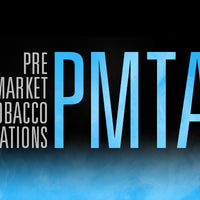Thanks to a recent court ruling, e-cigarettes are no longer subject to New York state’s ban on public smoking. This victory for vapers marks the first time that a legal entity in the U.S. has made a clear distinction between tobacco cigarettes and e-cigs. Given the impending federal regulations soon to be imposed on the e-cig industry, establishing the differences between smoking and vaping has never been more important. While the decision is undoubtedly good news for vapers living in New York, it is yet to be seen how the ruling will affect other jurisdictions.
New York Judge: Vaping Is Not Considered Smoking

New York City police officials charged Shawn Thomas with violating the state’s public smoking ban when they spotted him vaping while waiting for a subway train. The city’s Smoke Free Air Act explicitly prohibits e-cig use anywhere smoking is banned; however, because the officers charged Thomas under state law, which doesn’t mention e-cigs, Thomas was able to successfully challenge his citation in court.
According to the presiding judge, New York law defines smoking as “the burning of a lighted cigar, cigarette, pipe or any other matter or substance which contains tobacco.” Since e-cigs do not burn and are not tobacco products, the judge ruled that vaping “does not fit within the definition of ‘smoking’ under the law.”
The judge’s decision doesn’t prevent New York legislators from amending the current anti-smoking statute to cover vaping as well; indeed, they have already begun the process. New York City amended its law in 2013 to ban public vaping by just adding a few words. Nonetheless, the legal acknowledgement that vaping is distinct from smoking and should thus be treated differently under the law could have far-reaching consequences.
For now, e-cig users in New York can vape freely without fear of prosecution so long as they’re in a place that hasn’t specifically banned it. Other jurisdictions now have precedent to make separate rules for vaping. Of course, it could also encourage lawmakers to craft even more draconian legislation to ban public vaping.
The Differences Between Tobacco and E-cigarettes

To veteran vapers, the New York ruling sounds like a no-brainer. Unfortunately, many people still do not understand how e-cigs differ from traditional cigarettes. The first and most important difference is that e-cigs and e-liquid do not contain tobacco. Most e-liquids contain only nicotine, propylene glycol, glycerin and flavoring. Rather than combustion, e-cigs operate by heating e-liquid to produce a vapor that looks like cigarette smoke yet lacks the hundreds of chemicals that make the smoke from a tobacco cigarette so dangerous. Research suggests that vaping is 95 percent less harmful than smoking, and e-cig vapor poses no threat to bystanders. In fact, one study has shown that inhaling e-cig vapor is as safe as breathing air – perhaps even safer than breathing the heavily polluted air found in places like New York City.
E-cig vapor is also odorless, and some devices, such as White Cloud’s Invisivapor line, do not even produce visible emissions. President of the American Vaping Association Gregory Conley has also noted, “If you hold your breath for four or five seconds after you take a puff, no visible vapor is released,” which is a technique many vapers use to avoid drawing attention to themselves.
Related: Top Reasons Why Vaping is NOT Smoking
What’s Next for Public Vaping Laws?
A few other prominent public officials have recently stood up for e-cig users. The attorneys general of Virginia and Arizona released statements acknowledging that e-cigs are safer than tobacco cigarettes, and representative Duncan Hunter of California has presented the case for a legal distinction between vaping and smoking to congress. While other legislators continue to erroneously lump the two together, attitudes toward vaping are slowly becoming warmer in the US.






